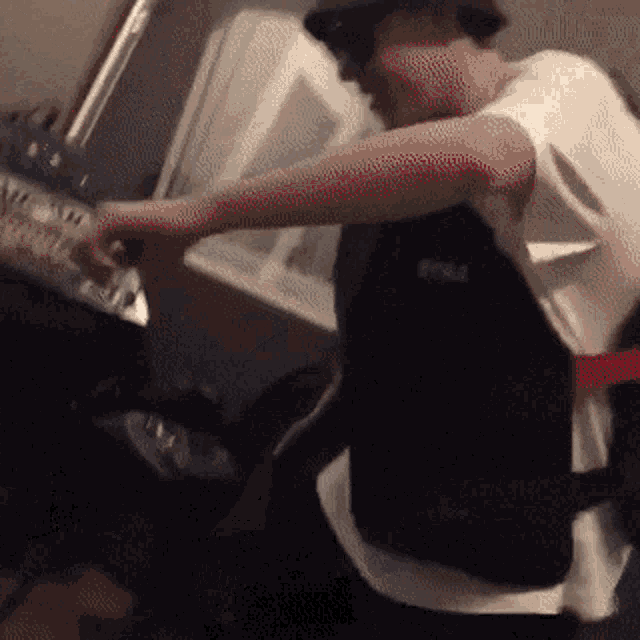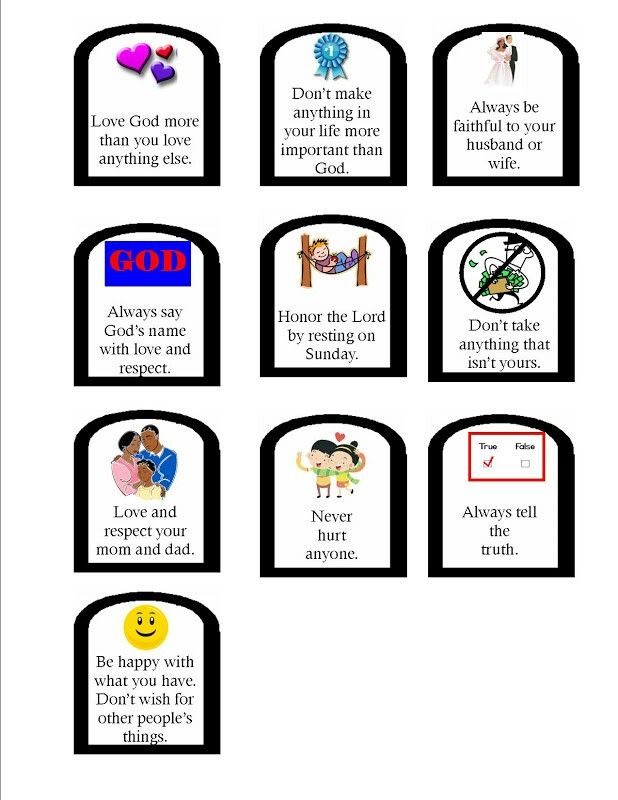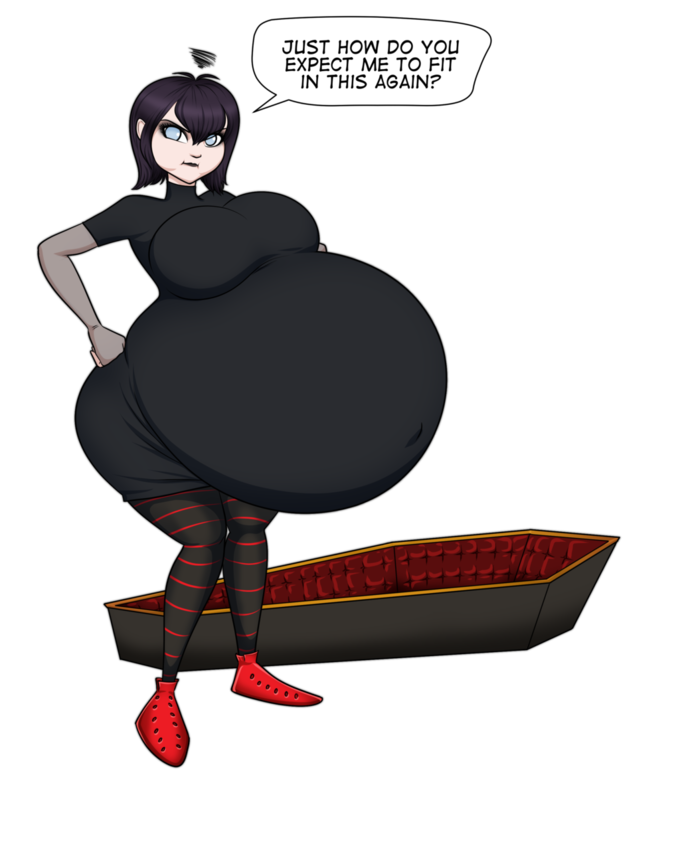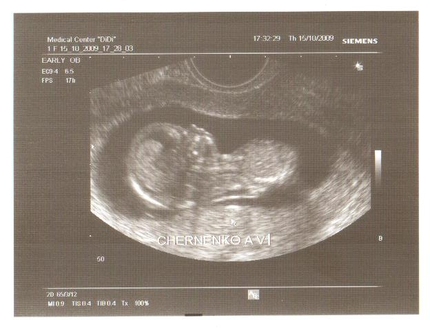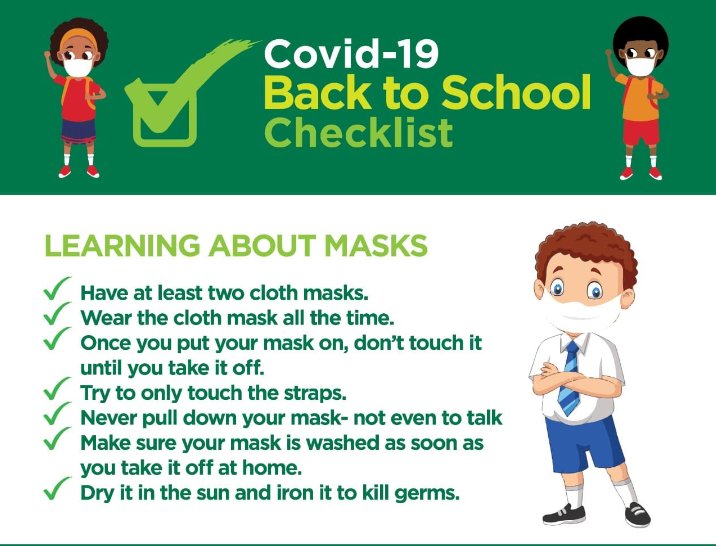Motor skills for preschoolers
Motor Skills for Preschoolers - Teaching Mama
Are you aware of what your child should know before Kindergarten? This post is part of a series that will later be compiled into an ebook on how to successfully homeschool your preschooler. Today I will share a list of gross motor and fine motor skills preschoolers should work on before Kindergarten.
Gross Motor Skills are the coordination of movements that are required for large movements: crawling, running, jumping, throwing, climbing, etc. These are the skills that develop before fine motor skills.
Here’s a list of skills your Preschooler should work on:
- runs (with good stamina)
- skips
- hops (on both feet and one foot)
- gallops
- leaps
- jumps
- somersaults
- pedals and steers a tricycle
- climbs a playground ladder
- throws a ball with direction
- catches a thrown ball with arms and body
- bounces a ball
This game we played last fall that involved running and sorting leaves. We had a lot of fun with this!
Fine Motor Skills require the use of smaller muscle groups to perform tasks that are precise in nature. Here’s a list of what a Preschooler should work on:
- stacks 10, one-inch blocks
- strings beads
- buttons
- zips
- snaps
- laces
- grasps crayon and pencil correctly
- completes a simple puzzle (7 pieces or more)
- scissor skills
- uses glue neatly
- uses tweezers
- completes a pattern
- makes a pancake, snake, and ball from play dough
- copies: vertical line, horizontal line, circle, cross, square, V, triangle
- copies first name
- prints first name without a model
Here are a few posts I’ve shared on fine motor skills.
Playing with play dough is a great way to build up strength in the hand to perform fine motor skills. This is a great activity that uses play dough and scissors!
I recommend buying kid tweezers for kids to practice pinching small objects.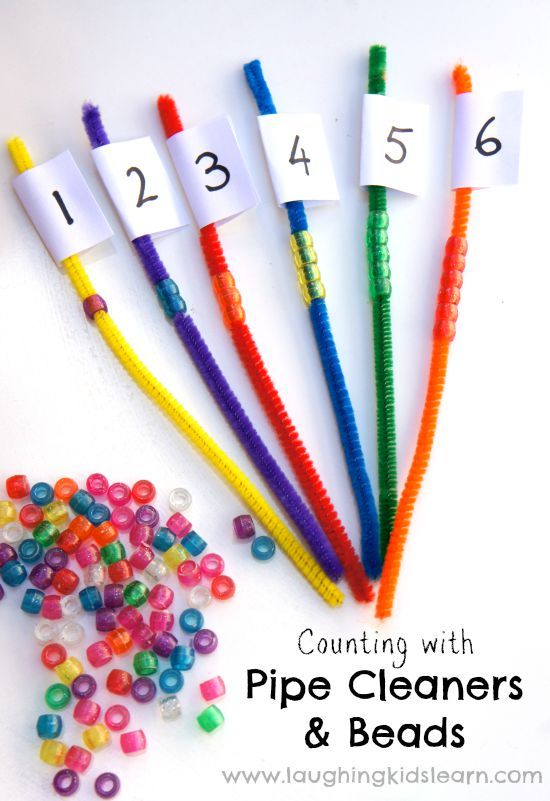 Here’s an activity (with a free printable) using tweezers to pick up goldfish.
Here’s an activity (with a free printable) using tweezers to pick up goldfish.
Lacing is another great skill to work on. It can be frustrating for your child at first, but with practice they will improve.
Lastly, I’ll share an activity we did with stringing beads to make a butterfly.
I have more ideas on my toddler page and preschool page and will continue to add more activities in the future.
Both of these motor skills work together to help us function throughout the day. You may wonder if spending time developing them is actual important. Yes, they will develop them eventually on their own, but I don’t think they are fully developed without some planned practice. I think the biggest reason to work on fine motor skill is that it directly impacts a child’s handwriting and cutting skills. In order to expect your child to write well, you need to focus on developing fine motor skills before ever asking your child to write. It is that important!
What are your thoughts? Anything you would add to this list?
What Are Gross Motor Skills for Preschoolers?
- Share
Why are gross motor skills so important for preschoolers to develop and how can parents and teachers build them with simple activities and movement games?
What are Gross Motor Skills?The process that children follow from learning to lift their heads as babies and run as toddlers, all the way to playing a sport in school is known as gross motor development.
Children develop gross motor skills when they learn how their bodies work and how they can move and control them.
Gross motor skills should be developed during infancy, toddlerhood and right through the preschool and early elementary/primary years.
During early childhood, it is important for children to develop skills such as muscle strength, balance, core strength, postural control, endurance and coordination.
Children naturally develop from the centre of the body outwards. This means they need to develop strength in their core and trunk before they develop it in their arms and legs.
Fine motor skills (such as finger strength and control) are therefore dependent on a child first building gross motor skills.
Gross motor skills can be developed in a variety of ways during childhood, through free play as well as adult-guided activities.
Planning movement activities to do with your children allows you to work on specific skills with them, such as balance or catching and throwing.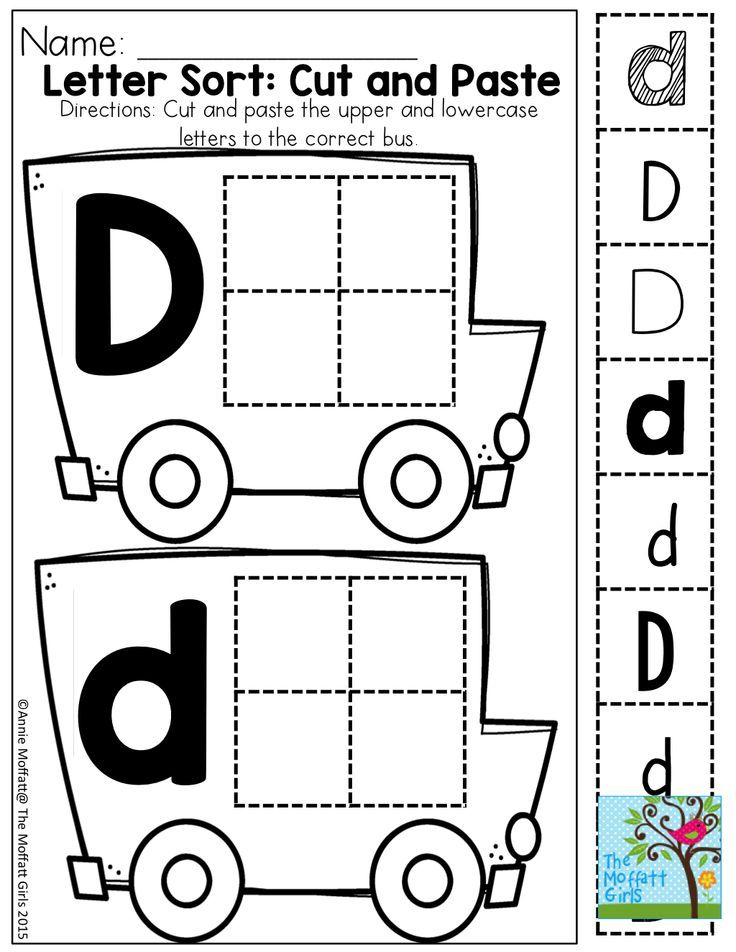
When children do not have well-developed gross motor skills, this can result in:
- poor concentration in class
- poor body awareness and control
- difficulty writing
- difficulty sitting at a desk
- inability to cross the midline
- poor posture, balance and coordination
- avoidance of sports and physical activities
What Are Examples of
Gross Motor Skills?Here is a list of gross motor skills examples for preschoolers:
- running, walking, galloping, chasing
- crawling, lifting, reaching
- skipping, hopping, leaping
- catching, throwing, pushing, pulling
- rolling, dribbling, kicking
- balance and coordination
- hitting, bouncing, passing
- climbing, hanging, holding
Here is a list of the gross motor milestones, by age.
This post contains affiliate links for educational products that I personally recommend.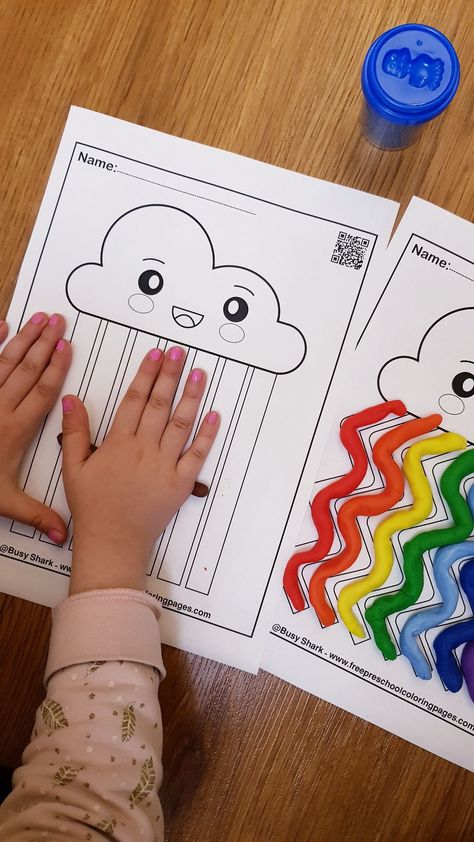 If you purchase through one of them, I earn a commission at no extra cost to you. Read the terms and conditions for more details.
If you purchase through one of them, I earn a commission at no extra cost to you. Read the terms and conditions for more details.
Gross Motor Skills Activities for Preschoolers
Here are some ideas to develop preschoolers’ gross motor skills with games and activities.
1. SkittlesThis game can be played with a plastic set of skittles or a homemade set.
Simply take empty plastic cooldrink bottles and pour some sand or water into them so they will stand up. You can also make an art activity out of it and paint the bottles different colours.
They should not be impossible to knock down though. Vary the amount of sand/water depending on your child’s age and strength.
Place the bottles standing up into a V-shape and take turns rolling a ball towards them and knocking them over. The younger your child is, the bigger the ball should be.
2. HopscotchThis is an old favourite. Hopscotch is best played outside by drawing the squares with jumbo chalk on concrete or paving.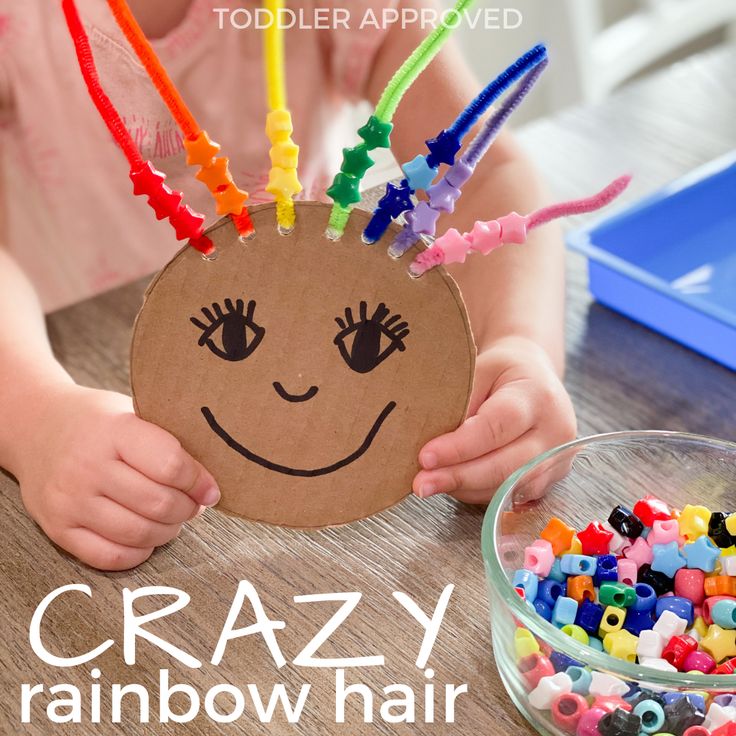
Here is an example of the formation of squares, but you can change this:
Take turns with your child jumping through the squares – hop on one foot on single squares and jump with two feet into double squares (one foot in each square). When you get to the end, turn around and hop back to the start.
Learning to hop on one foot or two feet is an important skill for a preschooler and this is a great game to teach this skill.
When your child has mastered how to hop, vary the game by using a beanbag or stone and throwing it into the first square before beginning.
Then, hop over the beanbag and jump into the second square. Hop all the way to number 10, turn around and hop backwards, bending over to pick up the beanbag on one leg on returning to 1.
This awesome indoor hopscotch rug will encourage lots of extra movement.
3. Tape JumpingTest your child’s jumping skills with this game using only a roll of craft tape.
Lay a strip of tape on the ground as a starting point. Then place another few strips spaced closely together and get your child to hop, feet together, from tape to tape.
Then place another few strips spaced closely together and get your child to hop, feet together, from tape to tape.
Then, move the strips slightly further apart and see if your child can jump further. Continue moving them further away until you reach your child’s limit. Measure the distance and watch your child slowly beat that distance every time they play.
4. Balancing BeamUse a beam in your garden (such as a low wooden fence) or create a makeshift balancing beam out of a wooden plank or any other material. Balance it on some bricks or low stools.
Practise walking across the beam and not falling off. Turn it into a game and pretend there are crocodiles in the river below.
Challenge your child to walk across the beam, turn around at the end and walk back without falling off.
5. Through the TunnelStand a short distance from your child with your legs spread wide apart. Get him to roll a ball “through the tunnel” (through your legs).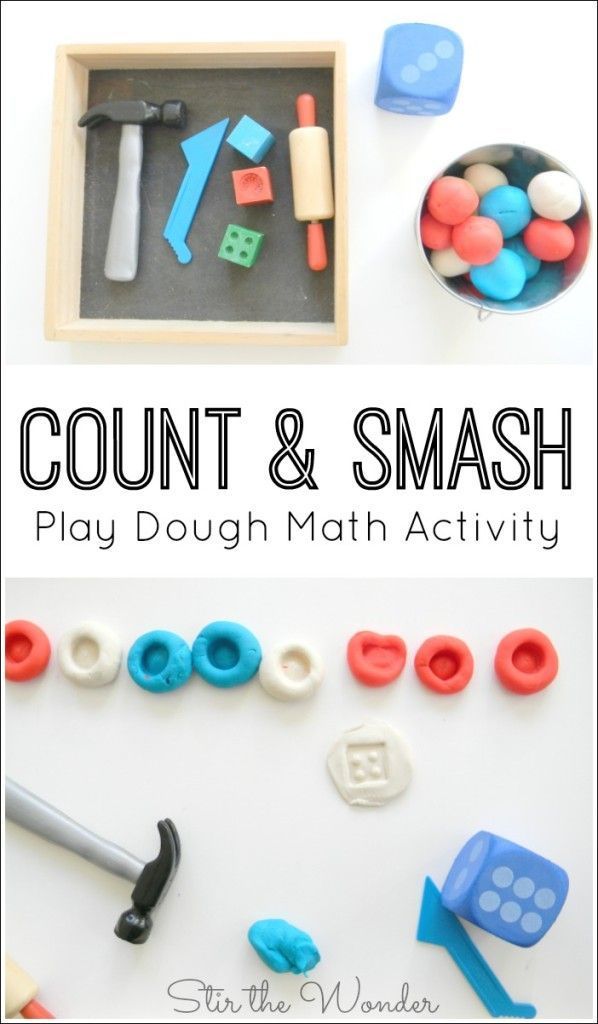
With practice, you can begin to stand further away from your child and make the tunnel narrower by stepping your legs closer together, as well as using a smaller ball. This is a good game for developing ball skills and eye-hand coordination.
6. Beanbag TossPlaying with beanbags is another good way to work on eye-hand coordination. You can also replace beanbags with soft balls or even handmade balls or beanbags (stuffed material).
Use a bean bag toss board or find a target such as a laundry basket or a box. Use a target with a large opening for younger children.
Take turns aiming and throwing the beanbags into the basket and counting how many got in each time. Slowly move the target further away, or make it smaller (e.g. use a small bin).
Here are more fun bean bag activities for kids.
7. Obstacle CourseBuild your child’s strength and agility with a fun homemade obstacle course. These can be built indoors or outdoors.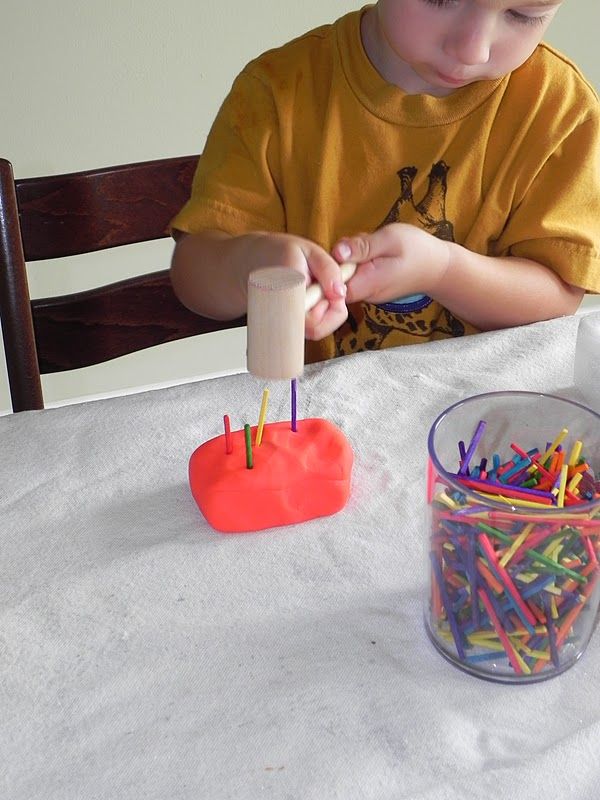
Be creative and place together several props into a course that you and your child will take turns to follow, or even race through.
Provide a mix of activities in each course, such as opportunities to climb, jump, throw, etc.
Here are a few ideas for props and activities:
- chairs to step/climb over
- Planks to walk along
- beanbags to balance on your head
- an empty box to crawl through
- hopping in between the rungs of a ladder (lying down)
- swinging on a tree branch
The Egg and Spoon Race is a favourite for young children’s sports days. Your kids will love racing you in this fun game.
Simply balance an egg in a tablespoon from the start line to the finish line.
You may want to boil the eggs first unless you’re really in the mood for some fun! Nothing will sharpen the skills and concentration quicker than the threat of an egg cracking open.
9.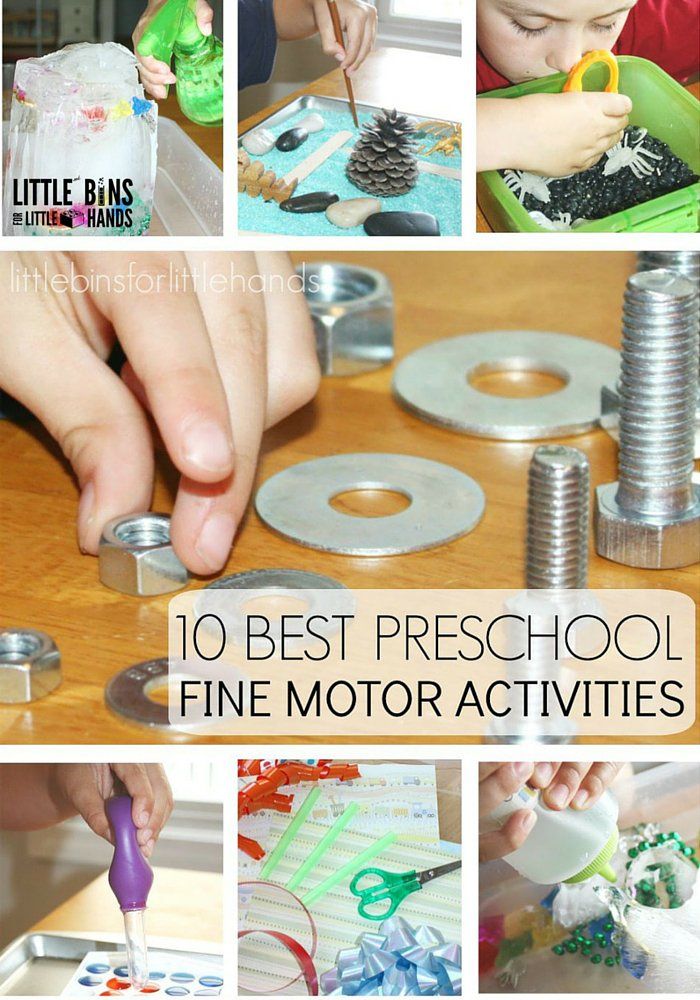 Simon Says
Simon SaysSimon Says is a game that can be played to develop many of your child’s skills, including listening skills, concentration, auditory perception, etc. Use this game as a way to stimulate your child’s large muscles.
Make it more fun by taking turns and allowing your child to also give you instructions to follow.
Some ideas of actions:
Simon Says…
- do a crab walk to the wall and back
- run to the tree, do 4 jumping jacks and run back
- do 3 cartwheels, turn around and lie on your back
- hang from the monkey bars for 10 seconds
Incorporating multiple actions will work on your child’s ability to follow instructions at the same time.
10. Balloon TossBlow up some balloons and play a game of Balloon Toss. The object is to see how long you and your child can keep the balloon in the air, by tossing it back and forth, before it drops to the ground.
Time each round and see how long you last.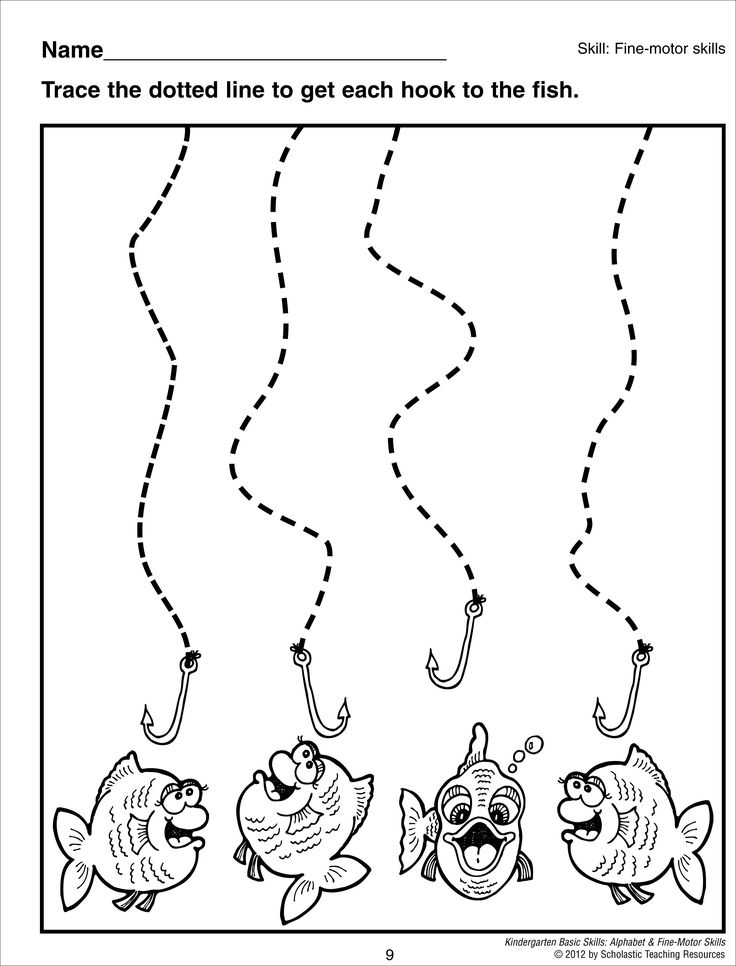 When you can go for at least a minute, try lifting two balloons in the air and keeping them both in the air.
When you can go for at least a minute, try lifting two balloons in the air and keeping them both in the air.
As you can see, gross motor skills are an important part of your child’s overall physical development but are easily built through play.
11. Action Songs
Sing some action songs to get the body moving. They are also great for developing body awareness.
Here’s an example:
Head, shoulders, knees and toes,
knees and toes
Head, shoulders, knees and toes,
knees and toes
And eyes and ears and mouth and nose
Head, shoulders, knees and toes,
knees and toes
12. Play With Balls
Playing with balls is one of the most basic activities and one that will keep babies, as well as 10-year-olds, entertained.
Balls are great practice for developing hand-eye and foot-eye coordination.
Throw and catch balls of different sizes
The Effects of Screen Time and Less Play Time on Gross Motor DevelopmentOver the years, there has been a tendency to replace children’s free play time with all kinds of extra activities.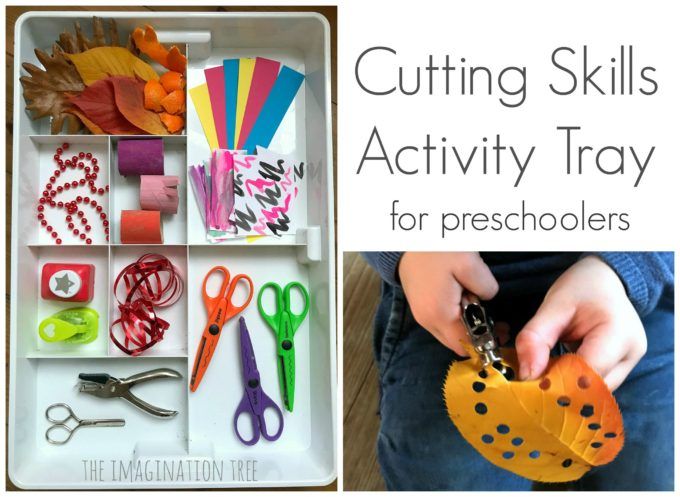
While you may want to send your children for swimming lessons or the occasional extra activity, there is no need to have your 4-year-old attending art class, computer class, multiple dance classes, ball skills class, etc.
These activities are replacing children’s playtime. Playtime is vital for your child’s development, especially for building their gross motor skills.
If you are packing your children’s free time with paid activities and programs, know that many of these are unnecessary and are actually taking away from your child’s natural learning time.
As for screen time, while it is impossible in today’s times to prevent children entirely from watching screens, as a parent you can control how much screen time your child is exposed to.
Your 3-year-old does not need to be sitting on their iPad in the afternoon. They are supposed to be running around outside or getting up to mischief somewhere. They should be learning.
Whatever amazing online program your child is following is not a justifiable replacement for play.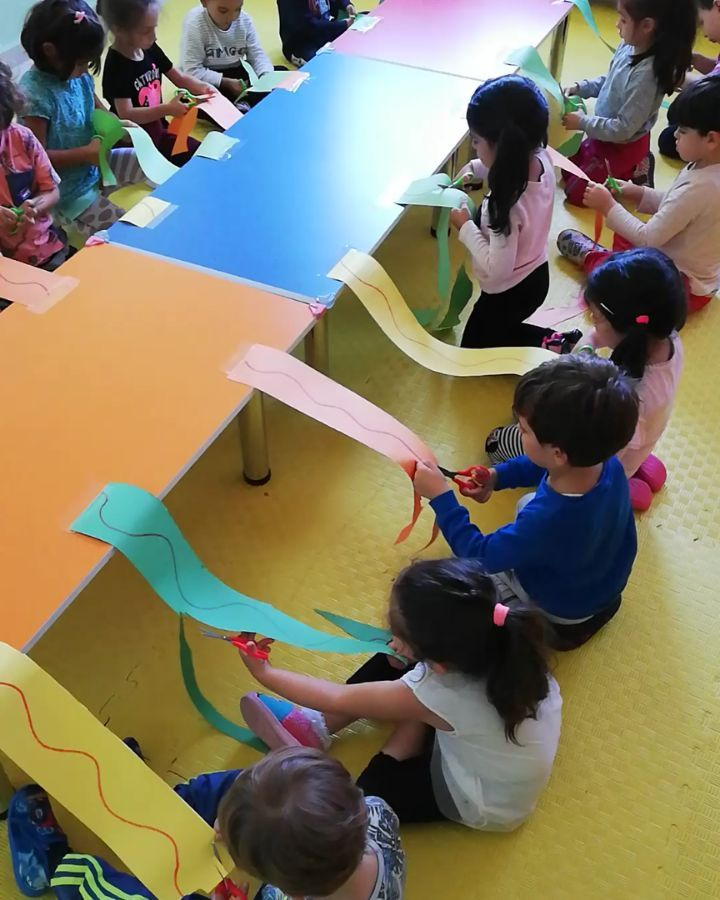
Just these two factors alone – screen time and extramural activities – have had a serious impact on children’s motor development in today’s times.
This translates directly into problems concentrating and working effectively in the classroom.
Here’s some of the research on the effects of screen time on the brain, shared by Debra Bradley Ruder,
Simply put, the more your children play freely, the more they will be learning.
Check out this awesome list of the best gross motor toys for kids and 35 of the best gross motor activities for kids.
Get FREE access to Printable Puzzles, Stories, Activity Packs and more!
Join Empowered Parents + and you’ll receive a downloadable set of printable puzzles, games and short stories, as well as the Learning Through Play Activity Pack which includes an entire year of activities for 3 to 6-year-olds.
Access is free forever.
Signing up for a free Grow account is fast and easy and will allow you to bookmark articles to read later, on this website as well as many websites worldwide that use Grow.
- Share
23 GAMES FOR THE DEVELOPMENT OF CHILDREN'S FINE MOTOR SKILLS.
1. ROLLING THE BALLS.
Children roll small balls on the table (on the playing field, on which you can draw different paths - straight, curved, in a spiral). During the game, the ball should not slip out from under the palm of your hand and should roll exactly along the track. Tell your baby: “Naughty balls! So they try to run away. Don't let them go!" Balls can be rolled both with palms (in the first games) and with one finger (in subsequent games).
2. GAME WITH RAISINS.
Always very joyful for both mother and child and useful for the whole family. Make dough, roll it out. Invite your child to decorate the dough with raisins. Show how to take the raisin correctly (“tweezer grip” with two fingers - thumb and forefinger). Show that the raisins should be laid out throughout the dough at a distance from each other. Then bake the resulting pie and eat it with the whole family! Joy is guaranteed!
3. SORTING SMALL OBJECTS
SORTING SMALL OBJECTS
It is very important that the baby does this either with a pinch (with three fingers) or in the “tweezer grip” method (grabbed with two fingers - thumb and forefinger).
In this case, the remaining fingers should be bent and not interfere. Show your child the correct way to do this exercise.
Mix two types of beads (or peas and beans; or shells and pebbles, or buttons of various shapes and sizes) in one box and ask for help. You can sort by color (if you mixed beads of two colors), by shape, by size. First, the baby sorts two types of objects of a sufficiently large size. Then the task becomes more complicated - smaller items are taken and sorted already into 3-5 groups (for example, beans in one box, peas in another, beads in a third, pebbles in a fourth, shells in a fifth).
Sorting always takes place in the game. For example, our chicken loves peas, and our cockerel loves beans. They need to divide their food into bowls.
Or one doll likes pasta and another likes beans.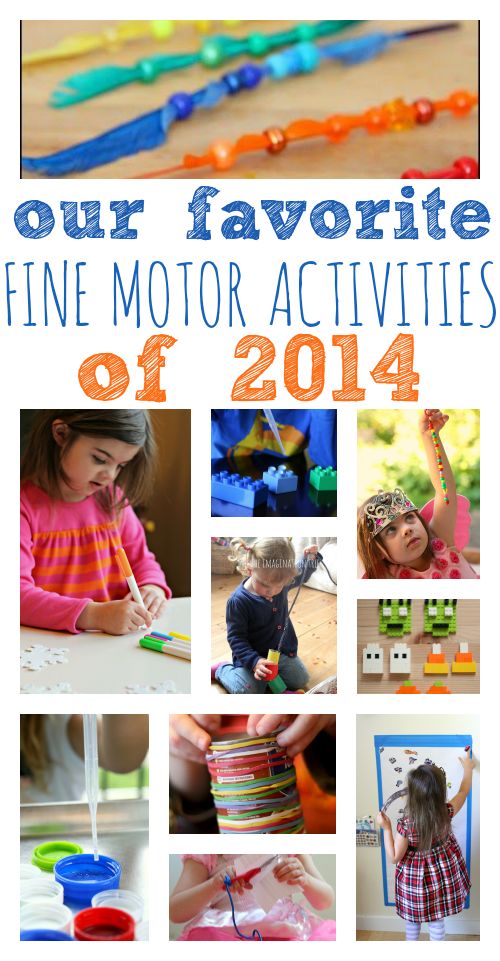 Give everyone what they love.
Give everyone what they love.
Sorting small items is very important in the third year of a child's life.
4. KNESSING PLASTILINE.
Before modeling, be sure to let a child of any age stretch the plasticine. This is a very useful exercise for developing fine motor skills. In this regard, ordinary domestic plasticine is much more useful than soft imported one.
5. STRINGING THE RINGS ON THE ROD OF THE PYRAMID (development of correlative hand movements).
First, the baby learns to disassemble the pyramid toy (it's easier), and only then to assemble it. Please note that even the smallest children easily remember the color sequence in the pyramid and collect it simply from memory, and not by comparing values. Therefore, if you want to teach them to compare the size of the rings and arrange them from largest to smallest in sequence, then you need a pyramid with rings of the same color!
6. SPILLING.
Use a funnel, scoop, spoon to pour different bulk solids from one container to another. You can pour sand, cereals, peas, lentils. Use different dishes - you can pour into a glass, a vessel with a narrow neck using a funnel. You can pour sand into the box with your hands, hide and look for various small toys in the sand.
You can pour sand, cereals, peas, lentils. Use different dishes - you can pour into a glass, a vessel with a narrow neck using a funnel. You can pour sand into the box with your hands, hide and look for various small toys in the sand.
7. GAMES - LACES (lace up an apple to the hedgehog's back, clothing details and other plot laces).
These games quickly bore the baby. Therefore, it is better if you have a doll whose shoes or clothes are tied with a lace. Putting on and undressing this doll in play will make it easy and fun for your little one to practice lacing.
8. EXERCISES WITH PAPER:
1) crumpling - development of arm strength (after that you get a “ball” that can be thrown into the basket from a distance),
2) tear (development of correlative movements) - we grab the sheet with the fingers of both hands and pull it in different directions. You get stripes. We put these strips in a box and make a “rain” by pouring our strips out of the box.
Important tips:
* When you offer your child paper for this exercise, you should always show him where to get the paper from.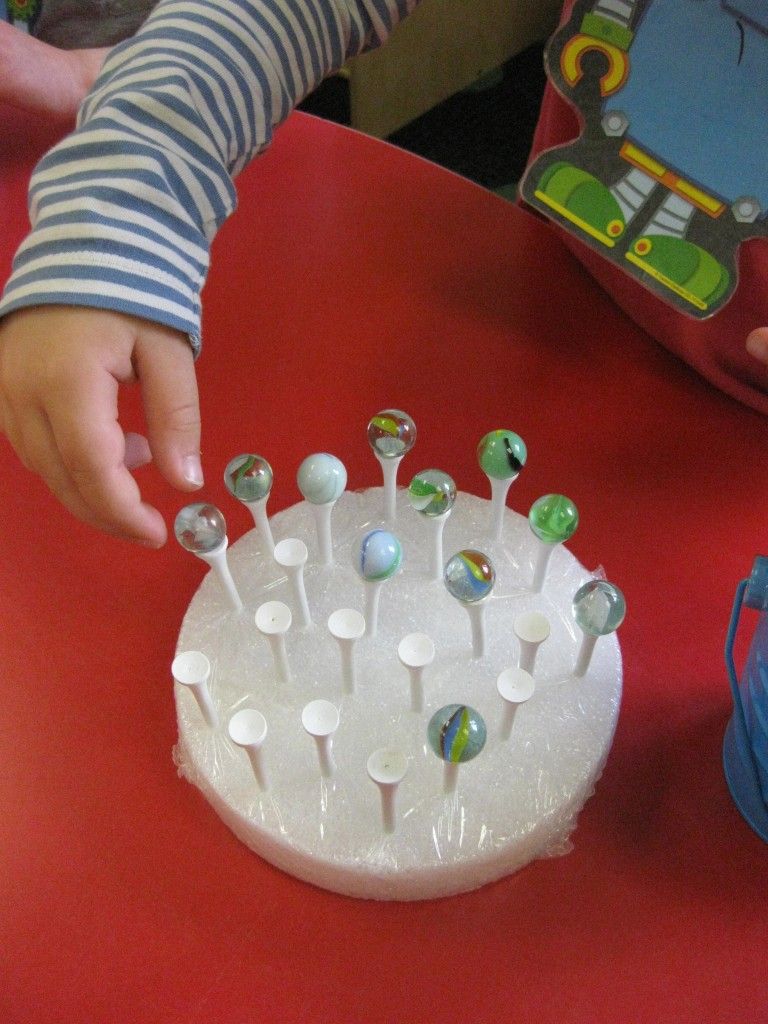 And they themselves should always take paper for this game only from this box. Otherwise, the baby will understand that you can tear everything that is around and tear books or something else you need. There is always a place for this exercise.
And they themselves should always take paper for this game only from this box. Otherwise, the baby will understand that you can tear everything that is around and tear books or something else you need. There is always a place for this exercise.
* Don't let us tear up old books and magazines. Any game we bring up attitude to life. And this is an example of unacceptable handling of the book. In addition, printing ink is not at all useful for young children.
* Old wallpaper rolls can be used for this exercise.
3) make applications from paper balls (crumple the paper, tear it into strips, then tear the strips into squares, roll each square on the palm into a ball, the silhouette is laid out with balls - for example, a cat, a lamb, a cloud)
4) make appliqués from pieces of paper that the baby picked. Draw a picture on a piece of paper. And stick pieces of paper on it according to the plot. White glued pieces can depict snow or clouds, blue ones - a river, yellow ones - autumn foliage of trees.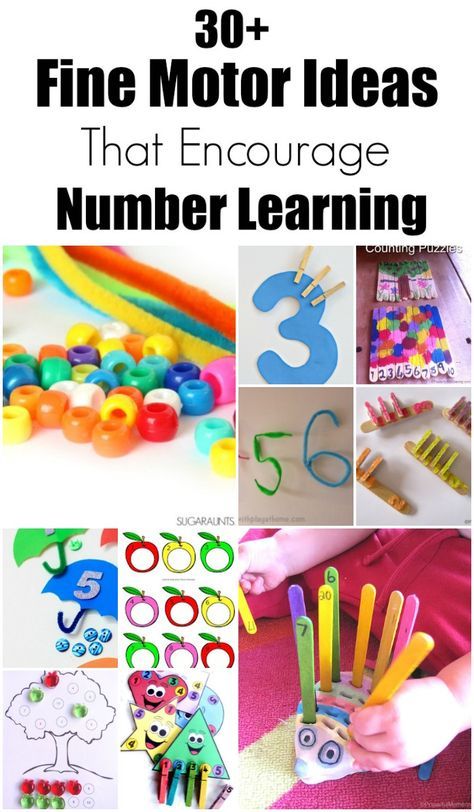
9. PUSHING SMALL OBJECTS INTO PLASTILINE (beads, seeds, shells, small stones).
This is how we can make pictures - mosaics on plasticine. And you can also help the hero of the game - for example, make a “blue river” (smear plasticine on a strip of cardboard) and build a bridge across the river (press pebbles into plasticine). And then toys will pass along this bridge and thank the baby for their help.
10. RUBBER PEAR.
Choose a small pear (available at the pharmacy). By pressing it, a stream of air is obtained, with which you can blow off a cotton wool or leaflet from the table. You can even play football, trying to drive the cotton wool into the goal with a jet of air. For children of the first year of life, a pear is not needed, this role is played by rubber toys - squeakers, playing with which the baby develops hand strength.
11. GRINDING GRINDERS.
First, the baby learns to launch the spinning top, and then the tops of large sizes.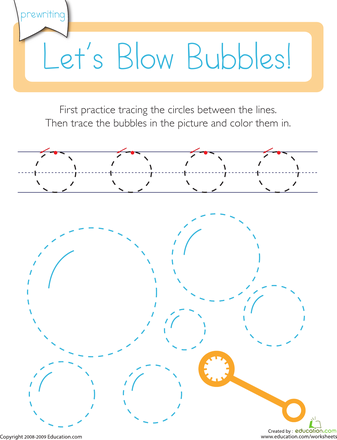 And after that, give the baby tops of a small size. Instead of a top, use any other items: pyramid rings, balls, plastic bowls, etc. It is also useful to wind clockwork toys with a key.
And after that, give the baby tops of a small size. Instead of a top, use any other items: pyramid rings, balls, plastic bowls, etc. It is also useful to wind clockwork toys with a key.
12. USE OF CUTLERY - SPOONS, FORKS.
The ability to independently eat with a spoon, fork, drink from a cup is also a very important component of the development of the baby and the development of fine motor skills.
13. OPENING THE OBJECT WRAPPED IN PAPER - SURPRISE - "WHAT'S THERE?"
When the baby unfolds the paper and finds the gift and plays with it, wrap it up again and hide it in another paper. And try to find again. Teach your baby to wrap - to hide an item from an older sister or brother, dad, grandmother. Let them rejoice when his surprise is unwrapped.
14. FILLING THE BOTTLE WITH SMALL OBJECTS.
Beans, pebbles, balls can be put into a plastic bottle.
To make this exercise effective, show your child how to do it correctly:
- Grab small objects with either a pinch or two fingers (thumb and forefinger) - just show how you grasp the object.
- Hold the bottle with one hand and pick up one part at a time with the other hand. It is very important to ensure that the baby takes it correctly and one by one!
- At the end, close the bottle with a cap and rattle the resulting rattle.
15. DESIGNERS.
Different designers develop fine motor skills very well. It is important to have several designers at home (but always with a DIFFERENT principle of connecting parts). It is also very useful to make handicrafts, work with clay.
16. STRINGING BEADS WITH LARGE HOLES ON THE CORD.
I saw a very good idea for stringing in the kindergarten "Solnyshko" in Moscow. The teachers of this kindergarten collect old unnecessary felt-tip pens with a plastic case. This body is cut into pieces. It turns out multi-colored "tubes" that children string on a string like beads.
You can also string spools of thread, rings for curtains, details of designers, beads made of clay or salt dough, rings from small pyramids.
17. TURN THE PAGES OF THE BOOK ONE BY.
This exercise is available to a child from the age of one. For this, the pages of the first book must be thick, made of cardboard.
Show the child a book. And put a picture on the next page - a surprise. To find it, you need to turn the page. If it is difficult for the baby, then help him by slightly lifting the page.
18. UNLOAD AND TIE KNOTS, BOWS, BRAID, UNDO AND ZIP VELCRO, BUTTONS, BUTTONS, HOOKS, ZIPPERS, REMOVE AND PUT ON HAT, PULL SOCKS, REMOVE SHOES.
Although most often in modern families the task of mastering different types of fasteners for babies is solved with the help of a developing book or rug, but this is just the first stage. Then the baby trains to do this in life, in everyday life.
The baby's clothes should have different fasteners - buttons of different shapes and sizes, buttons. It should be borne in mind that it is much easier to fasten the clasp on a rug or another person than on yourself.
The situation when a child has only velcro on clothes and shoes during the entire preschool age leads to the fact that even second-graders at the age of 8-9 are not able to dress themselves if the clothes have a different type of fastener, and cannot even lace up the laces dressing up for gym! But the lack of independence of the child and dependence on an adult directly affects his further behavior and success in life.
Already at an early age, the baby can take off and put on his hat, stretch out his arms when putting on a sweater, put on and take off mittens and gloves, pull off socks, take off shoes, put his hands in sleeves, and legs in trouser legs, take off unbuttoned panties, coat, jacket - and this is also a contribution to the development of fine motor skills of the baby, and a very big contribution.
19. LAY OUT FIGURES FROM STICKS, FROM DIFFERENT TYPES OF MOSAIC.
20. OPEN AND CLOSE JARS (unscrew and screw caps).
To make it more interesting, hide a surprise inside by wrapping it in paper. And at the same time, the baby will practice unfolding and folding paper. What is hidden in the jar?
21. WINDING.
Winding a thick thread on a stick, on a spool, on a ball and unwinding. Winding a thick lace around your hand - your own or your mother's.
22. ROLLING THE PENCIL BETWEEN THE PALM.
First, try rolling the pencil across the table with your palm. Then show your child how to roll the pencil between the straightened palms in the hands (the pencil is in an upright position). At the end of the pencil, you can stick a picture that will “dance” - spin.
23. FINGER FOLK GAMES.
I wish you success and the joy of communicating with your children!
1. ROLLING THE BALLS.
Children roll small balls on the table (on the playing field, on which you can draw different paths - straight, curved, in a spiral). During the game, the ball should not slip out from under the palm of your hand and should roll exactly along the track. Tell your baby: “Naughty balls! So they try to run away. Don't let them go!" Balls can be rolled both with palms (in the first games) and with one finger (in subsequent games).
2. GAME WITH RAISINS.
Always very joyful for both mother and child and useful for the whole family. Make dough, roll it out. Invite your child to decorate the dough with raisins. Show how to take the raisin correctly (“tweezer grip” with two fingers - thumb and forefinger). Show that the raisins should be laid out throughout the dough at a distance from each other. Then bake the resulting pie and eat it with the whole family! Joy is guaranteed!
3. SORTING SMALL OBJECTS
It is very important that the baby does this either with a pinch (with three fingers) or in the “tweezer grip” method (grabbed with two fingers - thumb and forefinger).
In this case, the remaining fingers should be bent and not interfere. Show your child the correct way to do this exercise.
Mix two types of beads (or peas and beans; or shells and pebbles, or buttons of various shapes and sizes) in one box and ask for help. You can sort by color (if you mixed beads of two colors), by shape, by size. First, the baby sorts two types of objects of a sufficiently large size. Then the task becomes more complicated - smaller items are taken and sorted already into 3-5 groups (for example, beans in one box, peas in another, beads in a third, pebbles in a fourth, shells in a fifth).
Sorting always takes place in the game. For example, our chicken loves peas, and our cockerel loves beans. They need to divide their food into bowls.
Or one doll likes pasta and another likes beans. Give everyone what they love.
Sorting small items is very important in the third year of a child's life.
4. KNESSING PLASTILINE.
Before modeling, be sure to let a child of any age stretch the plasticine. This is a very useful exercise for developing fine motor skills. In this regard, ordinary domestic plasticine is much more useful than soft imported one.
5. STRINGING THE RINGS ON THE ROD OF THE PYRAMID (development of correlative hand movements).
First, the baby learns to disassemble the pyramid toy (it's easier), and only then to assemble it. Please note that even the smallest children easily remember the color sequence in the pyramid and collect it simply from memory, and not by comparing values. Therefore, if you want to teach them to compare the size of the rings and arrange them from largest to smallest in sequence, then you need a pyramid with rings of the same color!
6. SPILLING.
Use a funnel, scoop, spoon to pour different bulk solids from one container to another. You can pour sand, cereals, peas, lentils. Use different dishes - you can pour into a glass, a vessel with a narrow neck using a funnel. You can pour sand into the box with your hands, hide and look for various small toys in the sand.
7. GAMES - LACES (lace up an apple to the hedgehog's back, clothing details and other plot laces).
These games quickly bore the baby. Therefore, it is better if you have a doll whose shoes or clothes are tied with a lace. Putting on and undressing this doll in play will make it easy and fun for your little one to practice lacing.
8. EXERCISES WITH PAPER:
1) crumpling - development of arm strength (after that you get a “ball” that can be thrown into the basket from a distance),
2) tear (development of correlative movements) - we grab the sheet with the fingers of both hands and pull it in different directions. You get stripes. We put these strips in a box and make a “rain” by pouring our strips out of the box.
Important tips:
* When you offer your child paper for this exercise, you should always show him where to get the paper from. And they themselves should always take paper for this game only from this box. Otherwise, the baby will understand that you can tear everything that is around and tear books or something else you need. There is always a place for this exercise.
* Don't let us tear up old books and magazines. Any game we bring up attitude to life. And this is an example of unacceptable handling of the book. In addition, printing ink is not at all useful for young children.
* Old wallpaper rolls can be used for this exercise.
3) make applications from paper balls (crumple the paper, tear it into strips, then tear the strips into squares, roll each square on the palm into a ball, the silhouette is laid out with balls - for example, a cat, a lamb, a cloud)
4) make appliqués from pieces of paper that the baby picked. Draw a picture on a piece of paper. And stick pieces of paper on it according to the plot. White glued pieces can depict snow or clouds, blue ones - a river, yellow ones - autumn foliage of trees.
9. PUSHING SMALL OBJECTS INTO PLASTILINE (beads, seeds, shells, small stones).
This is how we can make pictures - mosaics on plasticine. And you can also help the hero of the game - for example, make a “blue river” (smear plasticine on a strip of cardboard) and build a bridge across the river (press pebbles into plasticine). And then toys will pass along this bridge and thank the baby for their help.
10. RUBBER PEAR.
Choose a small pear (available at the pharmacy). By pressing it, a stream of air is obtained, with which you can blow off a cotton wool or leaflet from the table. You can even play football, trying to drive the cotton wool into the goal with a jet of air. For children of the first year of life, a pear is not needed, this role is played by rubber toys - squeakers, playing with which the baby develops hand strength.
11. GRINDING GRINDERS.
First, the baby learns to launch the spinning top, and then the tops of large sizes. And after that, give the baby tops of a small size. Instead of a top, use any other items: pyramid rings, balls, plastic bowls, etc. It is also useful to wind clockwork toys with a key.
12. USE OF CUTLERY - SPOONS, FORKS.
The ability to independently eat with a spoon, fork, drink from a cup is also a very important component of the development of the baby and the development of fine motor skills.
13. OPENING THE OBJECT WRAPPED IN PAPER - SURPRISE - "WHAT'S THERE?"
When the baby unfolds the paper and finds the gift and plays with it, wrap it up again and hide it in another paper. And try to find again. Teach your baby to wrap - to hide an item from an older sister or brother, dad, grandmother. Let them rejoice when his surprise is unwrapped.
14. FILLING THE BOTTLE WITH SMALL OBJECTS.
Beans, pebbles, balls can be put into a plastic bottle.
To make this exercise effective, show your child how to do it correctly:
- Grab small objects with either a pinch or two fingers (thumb and forefinger) - just show how you grasp the object.
- Hold the bottle with one hand and pick up one part at a time with the other hand. It is very important to ensure that the baby takes it correctly and one by one!
- At the end, close the bottle with a cap and rattle the resulting rattle.
15. DESIGNERS.
Different designers develop fine motor skills very well. It is important to have several designers at home (but always with a DIFFERENT principle of connecting parts). It is also very useful to make handicrafts, work with clay.
16. STRINGING BEADS WITH LARGE HOLES ON THE CORD.
I saw a very good idea for stringing in the kindergarten "Solnyshko" in Moscow. The teachers of this kindergarten collect old unnecessary felt-tip pens with a plastic case. This body is cut into pieces. It turns out multi-colored "tubes" that children string on a string like beads.
You can also string spools of thread, rings for curtains, details of designers, beads made of clay or salt dough, rings from small pyramids.
17. TURN THE PAGES OF THE BOOK ONE BY.
This exercise is available to a child from the age of one. For this, the pages of the first book must be thick, made of cardboard.
Show the child a book. And put a picture on the next page - a surprise. To find it, you need to turn the page. If it is difficult for the baby, then help him by slightly lifting the page.
18. UNLOAD AND TIE KNOTS, BOWS, BRAID, UNDO AND ZIP VELCRO, BUTTONS, BUTTONS, HOOKS, ZIPPERS, REMOVE AND PUT ON HAT, PULL SOCKS, REMOVE SHOES.
Although most often in modern families the task of mastering different types of fasteners for babies is solved with the help of a developing book or rug, but this is just the first stage. Then the baby trains to do this in life, in everyday life.
The baby's clothes should have different fasteners - buttons of different shapes and sizes, buttons. It should be borne in mind that it is much easier to fasten the clasp on a rug or another person than on yourself.
The situation when a child has only velcro on clothes and shoes during the entire preschool age leads to the fact that even second-graders at the age of 8-9 are not able to dress themselves if the clothes have a different type of fastener, and cannot even lace up the laces dressing up for gym! But the lack of independence of the child and dependence on an adult directly affects his further behavior and success in life.
Already at an early age, the baby can take off and put on his hat, stretch out his arms when putting on a sweater, put on and take off mittens and gloves, pull off socks, take off shoes, put his hands in sleeves, and legs in trouser legs, take off unbuttoned panties, coat, jacket - and this is also a contribution to the development of fine motor skills of the baby, and a very big contribution.
19. LAY OUT FIGURES FROM STICKS, FROM DIFFERENT TYPES OF MOSAIC.
20. OPEN AND CLOSE JARS (unscrew and screw caps).
To make it more interesting, hide a surprise inside by wrapping it in paper. And at the same time, the baby will practice unfolding and folding paper. What is hidden in the jar?
21. WINDING.
Winding a thick thread on a stick, on a spool, on a ball and unwinding. Winding a thick lace around your hand - your own or your mother's.
22. ROLLING THE PENCIL BETWEEN THE PALM.
First, try rolling the pencil across the table with your palm. Then show your child how to roll the pencil between the straightened palms in the hands (the pencil is in an upright position). At the end of the pencil, you can stick a picture that will “dance” - spin.
23. FINGER FOLK GAMES.
I wish you success and the joy of communicating with your children!
Author - Valasina Asya, candidate of pedagogical sciences, host of the Internet Workshop of developing games "Through the game - to success!", author of the site "Native Path".
Development of fine motor skills in children 4-5 years old
For the development of fine motor skills in children 4-5 years old, you need to perform simple exercises and massage the hands. Experts advise letting children open and close jars, pour cereal from glass to glass, and teach them how to tie knots. All these games for the development of fine motor skills in children will not take much time, but the benefits will be undeniable, because the way a child knows how to coordinate his movements largely affects the development of his speech and thought centers.
The most important role in the development of the child is played by the development of fine motor skills and coordination of finger movements. Therefore, it is very important to engage with a child from an early age through special exercises, games and tasks for the development of fine motor skills. The development of fine motor skills at 4-5 years old affects the maturation of the speech and motor areas of the cerebral cortex, which are in close proximity to each other. By developing motor skills, we influence the intellectual development of the child.
Games and exercises for the development of fine motor skills in children
How can fine motor skills be developed in a child at home? An important place in the development of fine motor skills and coordination of movements of the hands and fingers is occupied by various exercises and games.
Examples of how to develop fine motor skills in a child 4-5 years old:
1. Sprinkling any cereal from glass to glass. This exercise develops muscular hand coordination. When the child has mastered it, you can allow to pour or pour water or other drinks.
2. Tying knots. Teach your child how to make knots. It also develops coordination, fine motor skills and dexterity. You can start with a thick rope, then move on to a thinner one, such as a lace.
3. Opening and closing cans of various sizes. Place jars of different sizes, bottles, vials with lids in front of the child. Ask him to open all the lids and close them again. This lesson is also aimed at developing fine motor skills of the hands.
4. You can sew small bags and fill them with, for example, semolina, large pasta, rice, cotton wool, etc. Let the child feel these bags and guess what is in them.
5. Beads. What you need: pasta, a long string. How to play: we string pasta on a string.
6. Exercises with tweezers. What you need: tweezers, small "buttons", a few small bowls. How we play: using tweezers, we lay out the “buttons” by color in different bowls (shapes).
7. Exercises with clothespins. What you need: a box, clothespins, a set of paired pictures. Stick pictures on the edge of the box and on clothespins. How to play: take a clothespin with any picture, find the same picture on the box, attach a clothespin to the edge of the box.
8. Tracks. What you need: a sheet of cardboard, natural material (small pebbles, shells, beans, peas), small buttons. How to play: on a sheet of cardboard we lay out winding paths with the material of choice.
9. Laying out along the contour. What you need: a set of sheets with a contour image of objects, colored paper clips, buttons, natural material (shells, small pebbles, beans). How we play: suggest choosing a figure, lay out a figure along a given contour using the selected material, you can offer to “paint over” the figure.
10. Painting from beads. What you need: a sheet of cardboard, a set of colored beads. How to play: on a sheet of cardboard lay out a drawing as desired.
11. Twisting tapes. What you need: attached long satin ribbons with a small stick glued to the end (for example, from ice cream). How we play: offer to twist the ribbons from one edge to the other.
Most children are big fans of grabbing everything, touching, crushing or tearing. Many parents try to rid their child of these habits, but in vain. Translate the desire of children to act with their hands for good. In the process of actions with fingers, the active work of the speech centers of the child's brain begins. Don't restrict your baby. Prepare items that are not a pity, let the child wrinkle and tear them with pleasure. The smaller the resulting pieces, the better.
Drawing and modeling
Children's plasticine is an excellent tool for the development of fine motor skills. Give preference to modeling mass, which is made of safe materials, easily kneads and does not dry out. Invite your child to mold their favorite toy, animal, fairy-tale character. Toddlers can simply knead plasticine in their hands, any actions with fingers with effort help to form speech.
